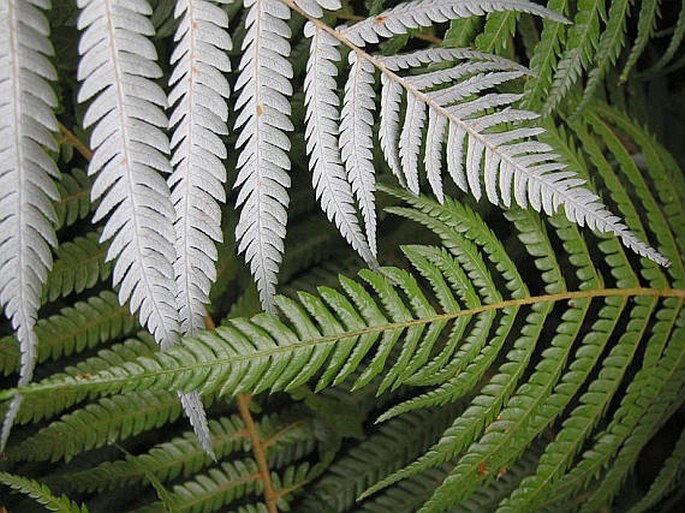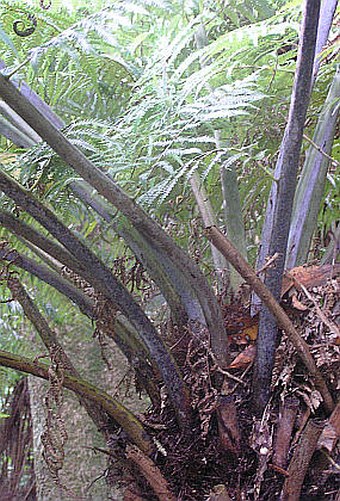Syn.: Alsophila tricolor (Colenso) R. M.Tryon, Cyathea tricolor Colenso, Polypodium dealbatum G. Forst.
Family: Cyatheaceae Kaulf.

Distribution: Endemic species of New Zealand which is common throughout the North and South Island to as far as the Catlins area, on the east, and is probably absent from the west. Grows as far as 45 degrees south.
Ecology: Rather common in lowland and montane forests and shrublands.
Description: Medium high (max. 10 m) tree fern. Trunk is up to 45 cm in diameter with upper part marked by the bases of the old frond stalks. Numerous fronds (2–4 m long, 60–120 cm wide) with silvery-white undersides and dark green face side spread more or less horizontally. Characteristic colour of fronds does not become evident until the plants are a few years old. On fertile fronds their undersurfaces are dotted with numerous brown sori. The bases of the frond stalks are usually covered with a silvery white, waxy bloom.
Note: Takes its name from the light underside of the fronds which can be used as a signpost for travellers in the bush, with the tips pointing the way. Alternative name “ponga” is also generic vernacular name for tree ferns in general. It is from this species that New Zealand’s national emblem, the “Silver Fern” is derived.




These images were taken in New Zealand, Rauhine Forest Range (March 24, 2007), New Zealand, Huka Falls (May 5, 2007), New Zealand, Wellington, Otari Wilsdon’s Bush (May 16 and 22, 2007).


